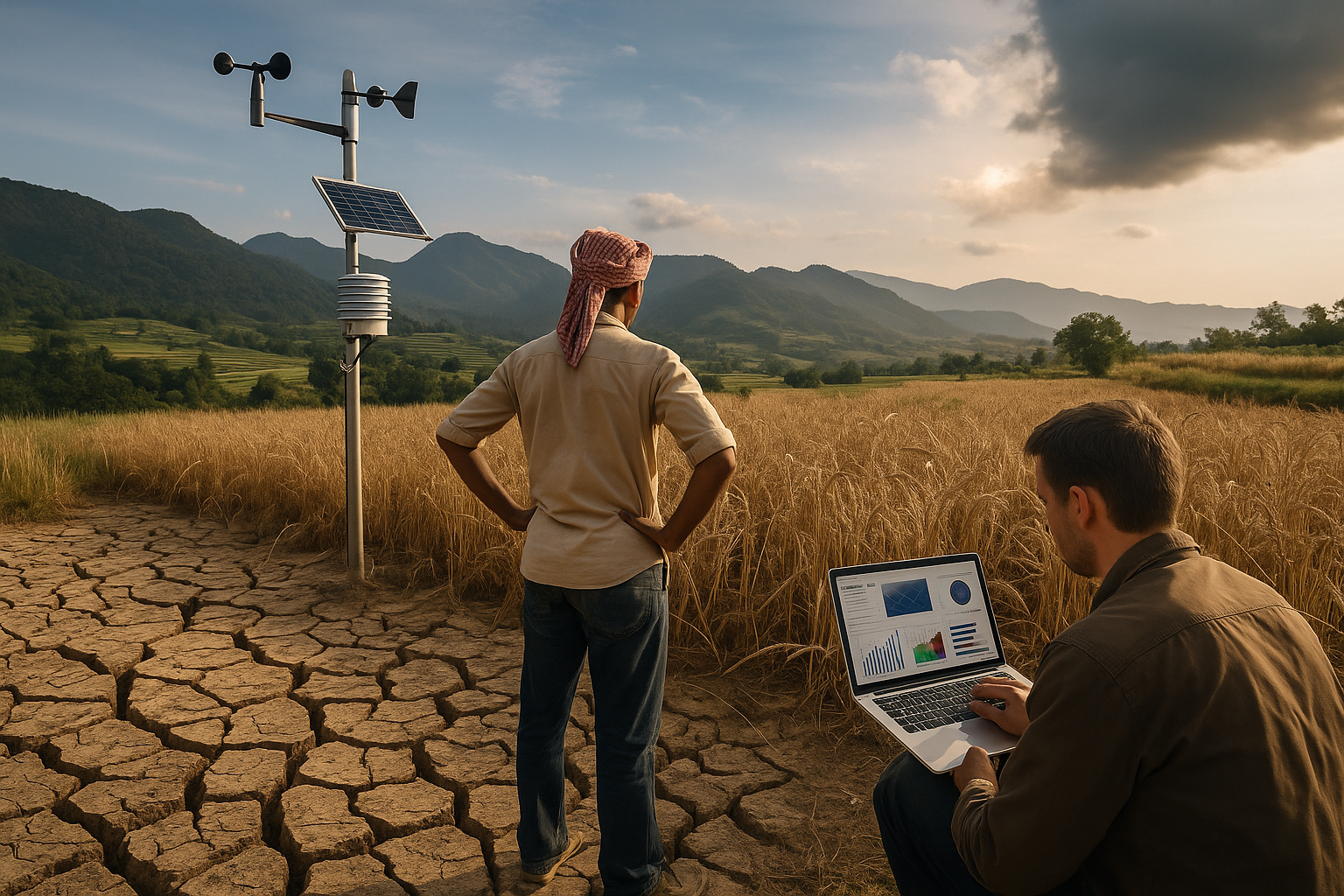Rising heat, drought and floods push food systems to the brink
India’s food supply chain, particularly in mountain and foothill regions, is increasingly fragile due to overlapping climate shocks. The team identifies 19 environmental stressors ranging from temperature rise and drought frequency to pest outbreaks and groundwater depletion. To map cause–effect relationships among these variables, the study employs the Fuzzy Decision-Making Trial and Evaluation Laboratory (DEMATEL) technique, an advanced analytical method used to identify systemic influence and interdependencies among stress factors.

- Country:
- India
A new study titled “Climate, Crops, and Communities: Modeling the Environmental Stressors Driving Food Supply Chain Insecurity” delivers a sharp analysis of how environmental stressors driven by climate change threaten the stability of food supply chains across three districts in Uttarakhand, India, namely Rudraprayag, Udham Singh Nagar, and Almora.
Published in the journal Earth, the research presents a multidimensional model that links climate risks to food production, storage, and distribution vulnerabilities through an innovative Environmental Stressor Index (ESI) built using Fuzzy DEMATEL modeling.
Identifying climate drivers of food insecurity
India’s food supply chain, particularly in mountain and foothill regions, is increasingly fragile due to overlapping climate shocks. The team identifies 19 environmental stressors ranging from temperature rise and drought frequency to pest outbreaks and groundwater depletion. To map cause–effect relationships among these variables, the study employs the Fuzzy Decision-Making Trial and Evaluation Laboratory (DEMATEL) technique, an advanced analytical method used to identify systemic influence and interdependencies among stress factors.
From the analysis, nine dominant drivers emerge as the most critical contributors to food insecurity: temperature rise, drought frequency, flood events, groundwater depletion, heatwaves, pest and disease outbreaks, air pollution (ozone), soil salinity, and gaps in digital infrastructure. Each of these factors plays a cascading role in weakening the resilience of regional agricultural systems. The study highlights that environmental risks not only reduce crop yields but also disrupt logistics, storage networks, and access to markets, creating a ripple effect on livelihoods and food availability.
The interactions among these stressors often amplify their individual effects. For example, recurring heatwaves accelerate groundwater depletion, while poor digital connectivity hinders the dissemination of early warnings or adaptive advisories. Such compound impacts, the authors note, are key to understanding the systemic fragility of rural food networks.
District-level vulnerability: Mapping the environmental stressor index
Using the weighted relationships derived from Fuzzy DEMATEL, the researchers calculate an Environmental Stressor Index (ESI) for the three selected districts, producing a data-driven map of regional vulnerability. The ESI provides a composite score that quantifies the cumulative effect of environmental, climatic, and infrastructural stressors on each district’s food system.
The results reveal a stark contrast between the districts. Rudraprayag emerges as the most vulnerable, with an ESI score of 0.755 under baseline conditions, indicating very high exposure to floods, landslides, and erratic rainfall patterns. Its steep terrain and fragile ecosystems make agricultural activity highly susceptible to climatic extremes. Despite moderate infrastructure, the region’s dependence on traditional rainfed agriculture and limited arable land amplifies risk.
Udham Singh Nagar records an ESI of 0.715, also categorized as highly vulnerable. The area, though agriculturally productive, faces chronic water stress, increasing salinity, and industrial pollution that degrade soil health. Here, the challenge is not only climatic but also structural, with groundwater depletion and air pollution combining to destabilize agricultural output.
On the other hand, Almora registers an ESI of 0.435, signaling moderate vulnerability. The district’s higher elevation and mixed farming systems provide some buffer against climatic variability, but drought and weak infrastructure still present significant threats. The researchers note that Almora’s vulnerability could rise if current adaptation efforts remain fragmented and underfunded.
The study’s scenario modeling extends these insights into the future by simulating two greenhouse gas concentration pathways, RCP 4.5 and RCP 8.5. Under the high-emission RCP 8.5 scenario, Rudraprayag’s vulnerability remains extremely high at 0.740, while Udham Singh Nagar’s score shows relative moderation but sustained exposure to water scarcity. Almora fares better, dropping to low vulnerability levels (0.133–0.167), reflecting potential gains from climate adaptation if mitigation strategies are prioritized. These projections illustrate how even modest changes in local governance and resource management could shift the resilience balance across districts.
From climate data to policy response: A roadmap for resilient food systems
The authors argue that food security must be reframed not only as a production issue but as a supply chain resilience challenge. They advocate for an integrated climate response that connects environmental monitoring, digitalization, and local governance. Their framework serves as a diagnostic tool for identifying district-specific intervention priorities, whether through water conservation, soil rehabilitation, pest management, or infrastructure investment.
For Rudraprayag, the study recommends strengthening flood defenses, enhancing early warning systems, and supporting diversification toward climate-resilient crops. In Udham Singh Nagar, strategies should focus on managing groundwater extraction, controlling industrial pollution, and expanding precision irrigation. Almora, meanwhile, requires improved connectivity, storage facilities, and drought mitigation programs tailored to its topography.
Data-driven governance is essential for building adaptive capacity. By merging environmental data with agricultural planning and logistics analytics, decision-makers can forecast disruptions before they occur. The Environmental Stressor Index, they contend, provides a scalable framework for such predictive governance, enabling policymakers to rank risks and allocate resources with greater precision.
Notably, the paper draws attention to the role of technology and digital inclusion. Digital infrastructure gaps, identified as one of the nine critical stressors, restrict farmers’ access to climate advisories, crop insurance, and market information. Bridging this divide is viewed as fundamental to achieving sustainable food supply chain stability
- READ MORE ON:
- climate change and food security
- environmental stressors in agriculture
- sustainable agriculture in Uttarakhand
- climate-driven agricultural risk
- drought and flood impact on crops
- how climate change affects food supply chains in India
- future climate scenarios and agricultural adaptation strategies
- FIRST PUBLISHED IN:
- Devdiscourse










